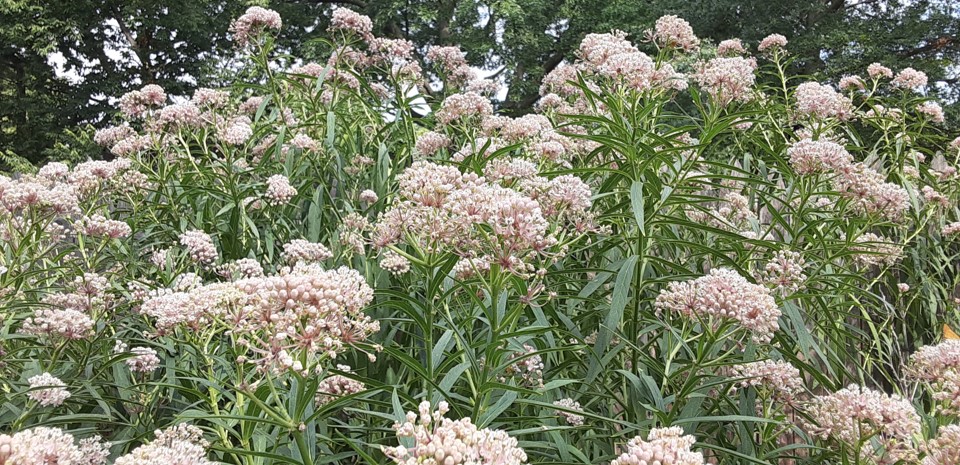Fall planting season is underway, and I’ve ordered a passel of plants to pick up at Saturday’s Missouri Prairie Foundation plant sale–but I can barely bring myself to think about them, I’m so tired. I have seasonal allergies. Maybe you do, too? When it’s allergy season, thinking about anything else is tough. What causes allergies? Is that volunteer plant I allowed to mature a culprit? What is that plant, anyway? Is it ragweed?
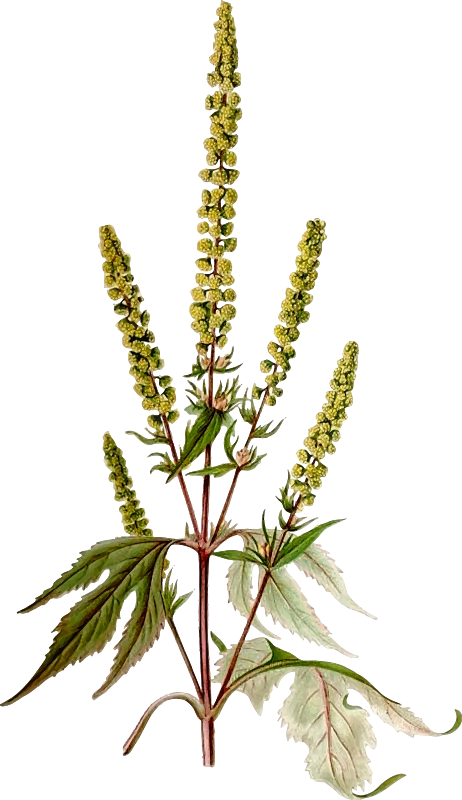
No, no, and no, it turns out. I am not alone, according to this article in last Thursday’s Star: “You’re not the only one who’s sniffly, Kansas City is hitting peak fall allergy season.” Good news: pollen counts will gradually diminish as we head deeper into fall. Bad news: our allergy season starts earlier and lasts longer each year because of climate change. Researchers report that KC’s volume of pollen has increased over the past 15 years. More CO2 in the air means bigger plants and bigger flowers that produce more pollen.
To really get obsessive about pollen levels, check Children’s Mercy’s daily pollen count page.
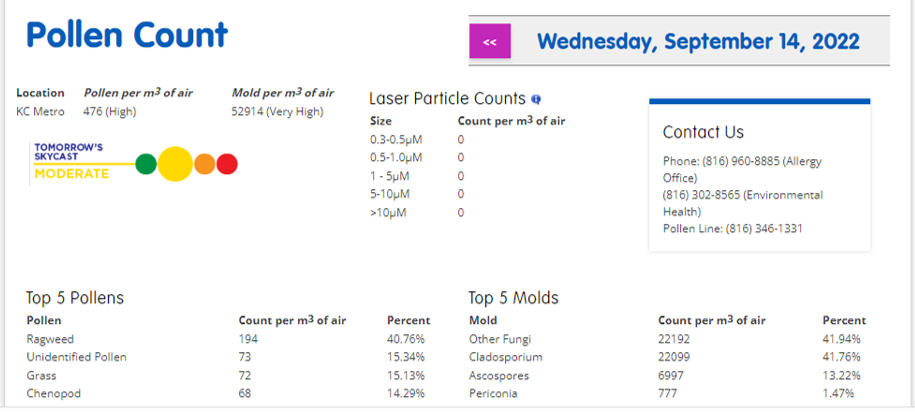
Today’s pollen count is high, and the mold count is very high, so no wonder I have the sniffles. I’m writing this on Wednesday, September 14, to post tomorrow, and if you head over now to check the day’s counts, you won’t find them. The person writing the daily comment will be out of town September 15-19, 2022, but will resume updating the data after that.
Children’s Mercy also gives advice about how to deal with seasonal allergies. Here’s a summary:
- For best results, don’t wait until symptoms start to take medication
- Stay indoors whenever possible
- Keep windows closed and run the AC
- Wipe pets’ feet, and maybe take off your shoes when you come in to avoid bringing allergens into your home.
I have found pretreating symptoms (over-the-counter antihistamines, in my case) to be most helpful.
Want to dig deeper into subject of Kansas City’s air quality? This site https://aqicn.org/map/kansas-city/ compiles air quality measurements from cities all over the world, including ours. (Even if you don’t live in Kansas City, it may report about yours, too.) Overall, I think Kansas City’s air quality is thought to be pretty good.
Ragweed vs. goldenrod
Most people know that ragweed causes hay fever, and many know how easy it is to confuse with other plants like solidago, or goldenrod, which blooms around the same time. The internet full of good articles about how to tell the two apart, like this one from The Spruce.
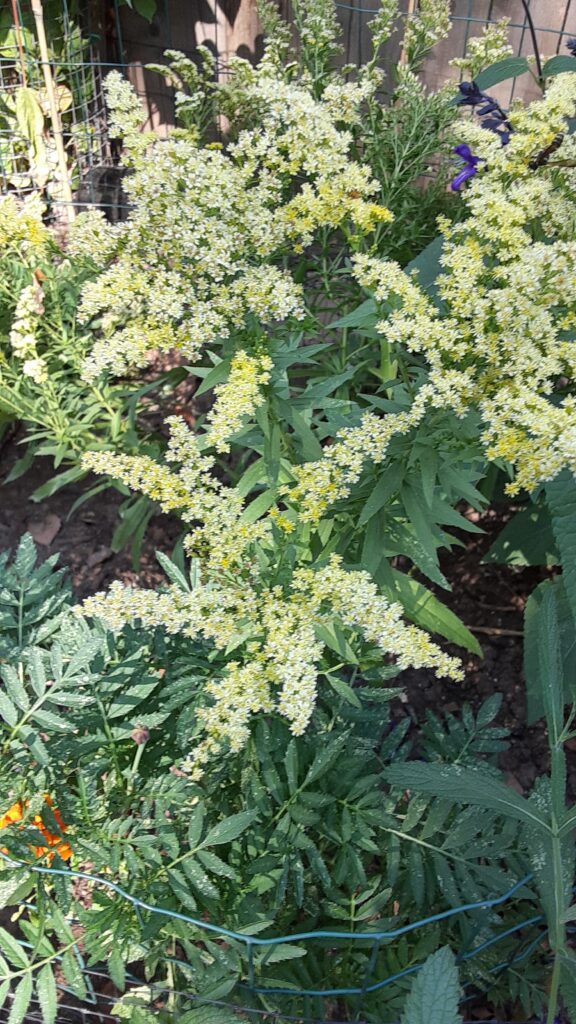
Apparently, ragweed has very fine pollen that gets carried far and wide, unlike goldenrod, which has fat pollen too heavy to be carried by the wind.
Compositae and Other Pollen
Ragweed isn’t the only problem. Children’s Mercy lists five common types of pollen that make people miserable:
| Ragweed | 194 | 40.76% |
| Unidentified Pollen | 73 | 15.34% |
| Grass | 72 | 15.13% |
| Chenopod | 68 | 14.29% |
| Compositae and Other Pollen | 69 | 14.5% |
Compositae refers to plants in the daisy family, like asters. Chenopods include amaranth, pigweed, waterhemp, russian thistle, lamb’s quarters, and kochia. Grass and Unidentified Pollen need no explanation. Although the weed on my patio is not ragweed (the white flowers are the giveaway. Ragweed is yellow), that doesn’t mean I’m not allergic to it. It could be boneset (Eupatorium perfoliatum L. or Eupatorium serotinum), which Prairie Nursery calls a late-summer standout. Its white, furry flowers are currently delighting a bunch of bees and wasps.
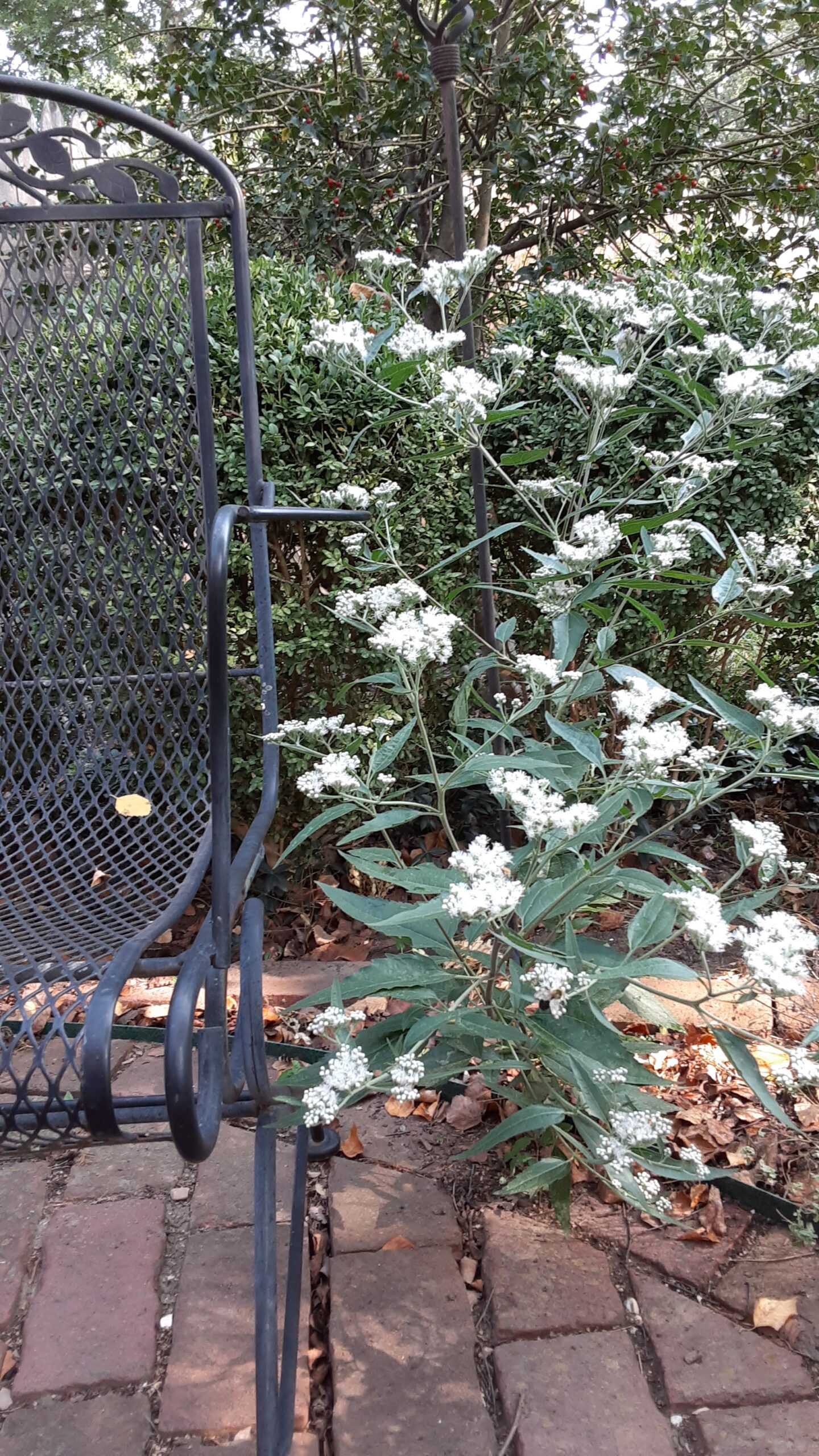
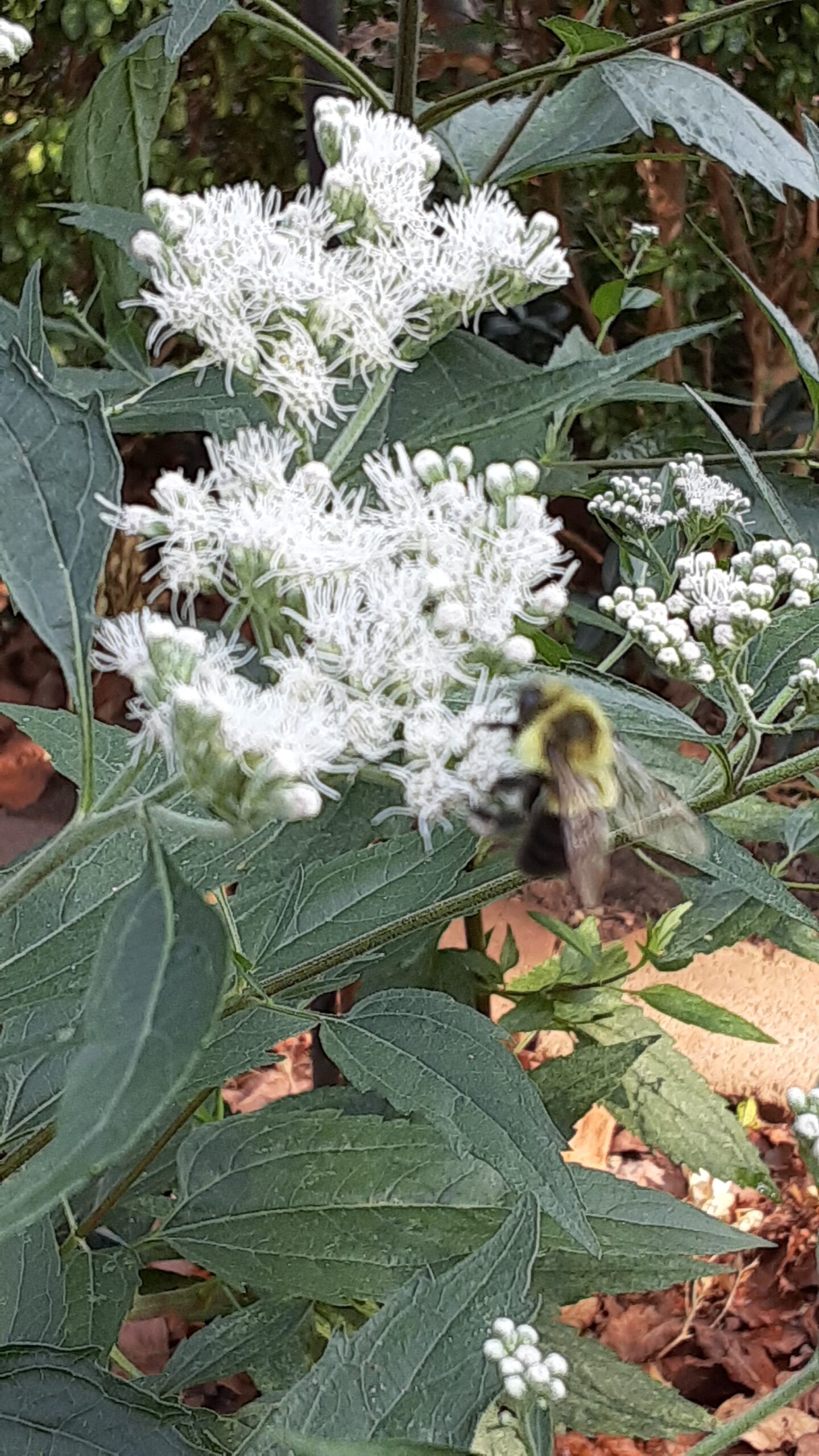
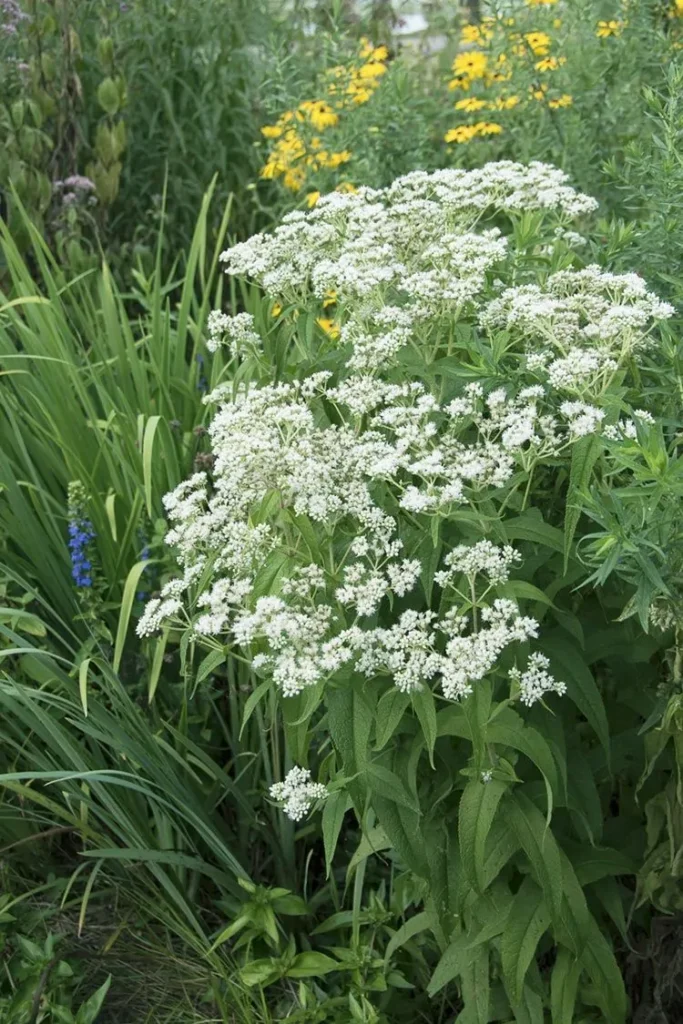
Ragweed may have peaked, but for those of us sensitive to mold, problems will continue, apparently because mold spores thrive on decaying vegetation (fallen leaves). The dew that wets the grass and soaks our socks also encourages Oomycetes (downy mildews).
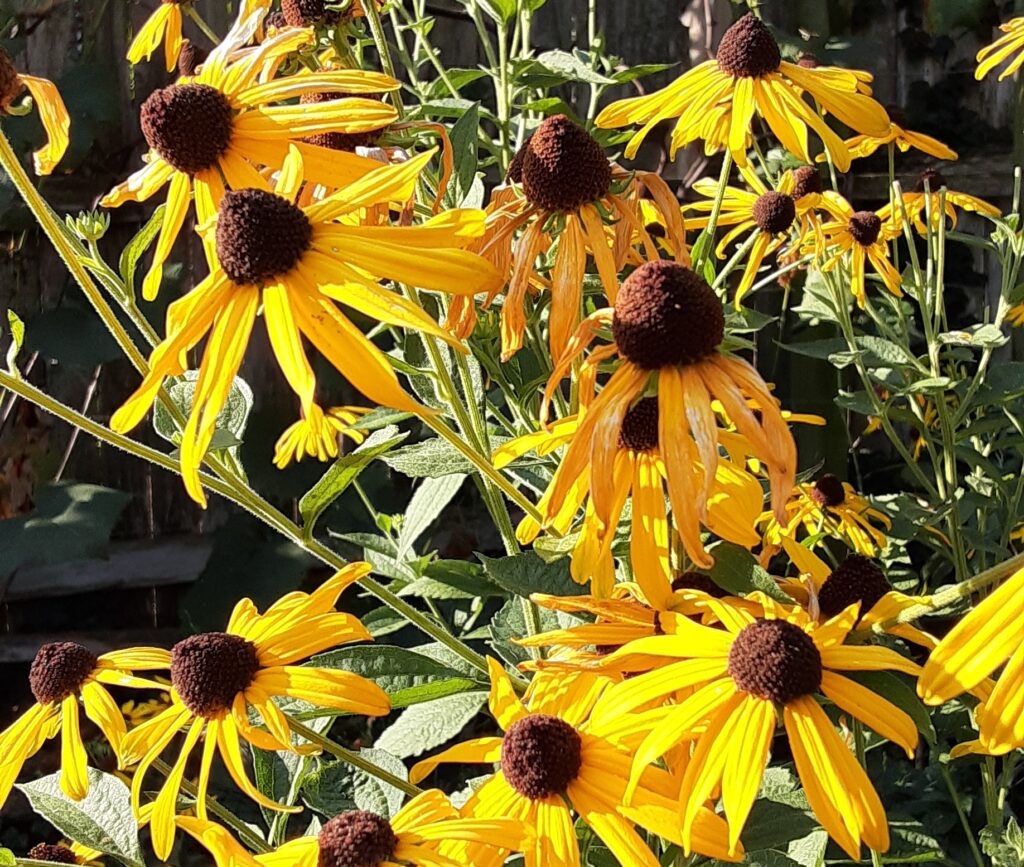
My Wild Garden: How the garden grew
I still have quite a few flowers. The Rudbeckia subtomentosa (Sweet Black-eyed Susan) and zinnias are late-season brighteners, and I have rose verbena is on its second bloom.
The milkweed was fantastic this year. The recent rain made it flop, but we had at least a month of pink flowers and unbelievable wildlife activity–monarchs, swallowtails, wasps, bees. We loved watching them. I found three monarch caterpillars and hoped to write about their transformation, but I lost them. I don’t know if they survived.
Last year I was discouraged because so many of the tall natives needed staking, but this year I like them better. I relocated some, but realize they support one another when planted thickly.
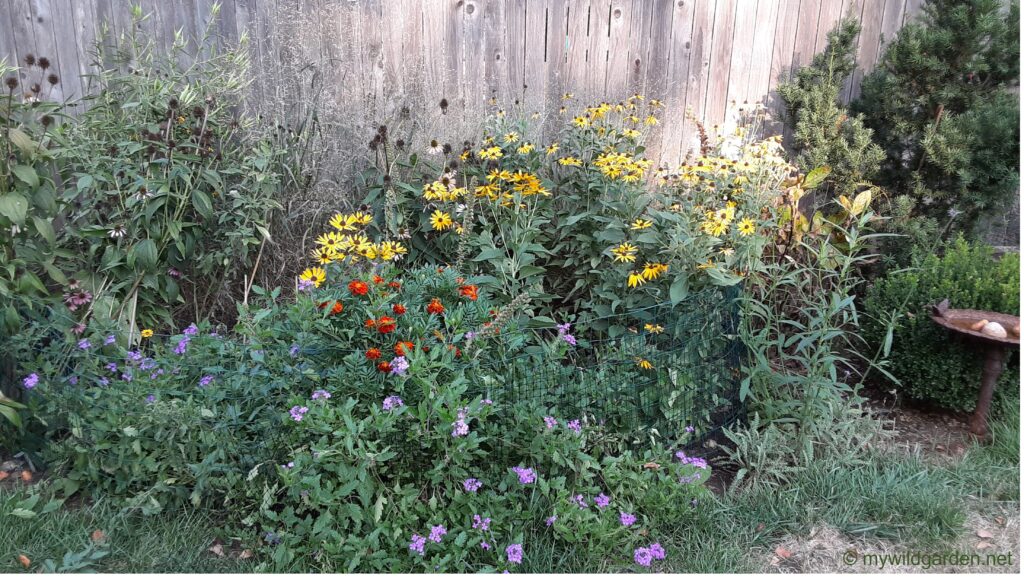
Some neighbors stopped by the other day and were surprised to see so many plants and flowers in the backyard. Not much is going on in front, and most passers-by don’t realize we’ve got all this great stuff growing back here. (Is that like writing blog posts but not sending a newsletter to let people know about them?) That’s going to change after Saturday, when I pick up my plants.
I’ll let you know how it goes. Until then, thanks for reading!
References
Missouri Prairie Foundation Native Plant Sale 9/17/22
https://moprairie.org/event/kansas-city-native-plant-sale-5/
You’re not the only one who’s sniffly, Kansas City is hitting peak fall allergy season (KC Star)
https://www.kansascity.com/news/your-kcq/article265441971.html
Children’s Mercy’s daily pollen count page
https://www.childrensmercy.org/pollen/
It’s not your imagination; allergy season gets worse every year (Vox)
https://www.vox.com/22383707/allergies-2021-pollen-allergy-covid-19-climate-change-asthma
Kids and springtime allergies: 6 mistakes you might be making (Children’s Mercy)
https://www.childrensmercy.org/parent-ish/2020/03/kids–springtime-allergies/
Air Pollution in Kansas City: Real-time Air Quality Index Visual Map
https://aqicn.org/map/kansas-city/
How to Identify and Avoid Ragweed (The Spruce)
